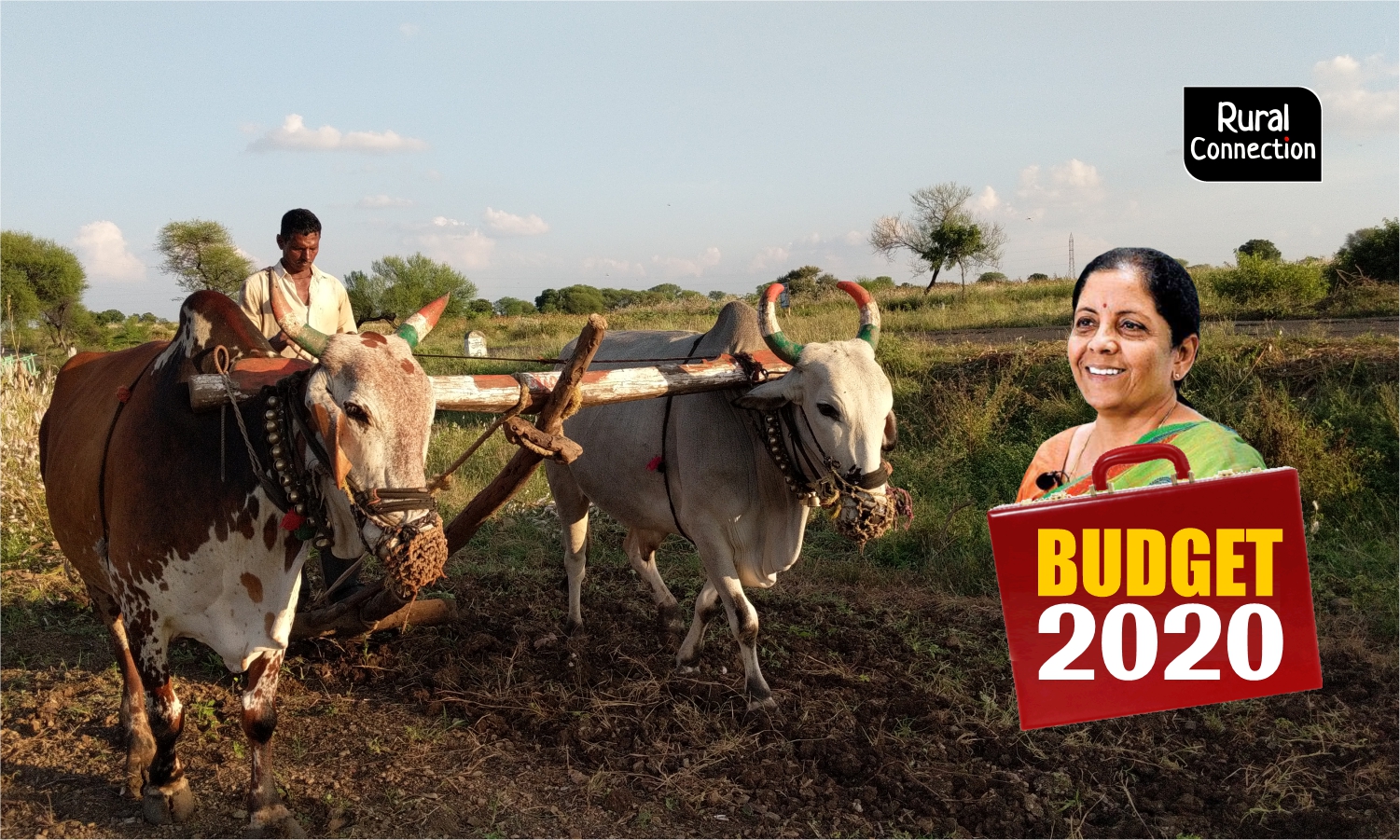Is it going to be a farmer-centric budget?
In 2019, in her maiden budget speech, Finance Minister Nirmala Sitharaman had emphasized on ‘gaon-garib-kisan’ as the cornerstone of policymaking. The farmers in the country have suffered massive losses due to weather inconsistencies. Their primary demand now is to get 100 per cent compensation


“By the time a crop is ready, the farmer had already spent Rs 15-20,000 in un-irrigated areas and up to Rs 40,000 per acre in irrigated areas from sowing to harvest. That money has gone into the soil without any idea of what may come up. Everything gets ruined due to rain and hailstorms, so the farmer should get 100 per cent compensation when the crop is wasted,” said agriculture economist Vijay Jawandhiya.
Pune-based Zawandhiya also told a committee of Members of Parliament (MPs) from Maharashtra in the recent past that the government should make special arrangements in the Budget for farmers affected by natural calamities. The Committee headed by Lok Sabha MP Parvatgowda Chandangowda was on a visit to several parts of Maharashtra.
“Looking at the events of the year 2019 one would know that there is an increased environmental threat to the farmers. The farmers need an insurance scheme which addresses the farmer’s problems. In the event of loss of a crop, the farmers must get full compensation because they sow the crop, provide the education to their children and buy medicine with the same money. The government should universalize the insurance and also bear the full premium. I have put forth many such suggestions before the MPs,” said Jawandhiya.
There is a provision for giving protection cover to farmers at a premium of 1.5 per cent to 2 per cent under the Pradhan Mantri Fasal Bima Yojana (PMFBY) for relief at the time of natural calamities (hail, drought etc). In the Budget for the year 2019-20, the central government had made a provision of Rs 14,000 crore under this head. But farmer-experts say that the insurance scheme has benefited companies more than the farmers. Several provisions and conditions of the scheme make it impossible for a common farmer benefit from it.

Digambar Bajirao Gaikwad, 40, a farmer based in Marathwada, Maharashtra had somehow managed money and sown one hectare of soybean, but it was ruined due to heavy rains of October-November. According to Digambar, he had spent at least Rs 15, 000, but received only Rs 2,400 as compensation from the government’s National Disaster Relief Fund.
For Digambar, the crop was a source of income. He lives in Chinchouli village of Umarga tehsil of Osmanabad district of Maharashtra with his two children and his wife. A poor harvest provides them with only wages in the name of earning. The crop insurance scheme money has not yet been received.
“The existing insurance scheme is benefiting the companies more,” said Devinder Sharma, renowned agriculture and export policy expert. “The scheme needs to be reviewed. There are two things — firstly, the farmer’s crop is compensated for the damage. Secondly, a farmer commits suicide, being buried in debt due to ruined crop. His family is left helpless and is also saddled with the burden of debt. The government should, therefore, waive off the debt of these farmers,” he added.
“The farmers did not benefit as much as it was claimed during the initiation of Pradhan Mantri Fasal Bima Yojana. Bihar, West Bengal and Andhra Pradesh issued their own policy by separating themselves from the scheme. Also, a few other states had expressed their willingness to withdraw from the scheme. Not only that, while the figures of the insurance companies being in profit have surfaced, four out of the 17 companies have bailed out of the scheme citing losses in the crop insurance business.
In the year 2019, farmers of the country suffered drought, rain, floods, storms, heatwave and hailstorm. Karnataka was hit by floods and droughts; Maharashtra suffered drought and excessive rain and floods; Bihar suffered drought, floods and heatwave; Rajasthan and Uttar Pradesh suffered floods, heavy rains, hailstorm and hailstorm.

On November 22, in a reply to a question, Narendra Singh Tomar, the Agriculture and Farmers Welfare Minister, had informed the Rajya Sabha that a total of 63.995 lakh hectares of cultivation was affected in 15 states of the country during the South-West Monsoon in 2019. Rajasthan suffered maximum loss at 27.36 lakh hectares and Karnataka was second with 9.35 lakh hectares.
Crop losses from floods etc during South-West Monsoon-2019 (Report: June-2019 to 14 November 2019)
Karnataka: 9.35 lakh hectares
Uttar Pradesh: 8.88 lakh hectares
Madhya Pradesh: 6.04 lakh hectares
Maharashtra: 4.17 lakh hectares
Bihar: 2.61 lakh hectares
Total: 63.995 lakh lakh
The total loss of floods and rains in the country could not be accurately gauged so far. The official detailed report of Kerala, Bihar, Karnataka and Maharashtra is awaited. According to the media reports, 61 people were killed in Karnataka due to floods, while it suffered economic loss worth Rs 35,160.81 crore. Most of the loss was reported in rural areas.
Most of the agriculture experts in the country talk of compensating farmers — whether through insurance or any other item — for their loss of crops. But the pain of the farmers of Bihar is prompting to look at the matter in a different way. The entire agricultural cycle of farmers is disturbed due to natural calamities like floods, droughts etc. Many a time, sowing could not be done in un-irrigated areas due to drought, as had happened in the year 2018, whereby a large area of Jharkhand could not be cultivated. Also, this time, the second crop could not be sown on thousands of hectares of land in Bihar due to the first drought and then the severe floods.
More than one lakh hectares of land comprising four districts of Bihar, Patna, Nalanda, Lakhisarai and Sheikhpura, is called ‘Bowl of dal’ or “Mokama Tal”. Tur dal is cultivated on a large scale in this area. As per a rough estimate, about 1.5 lakh farmers and 3 lakh labourers are involved here in farming. But in November, the fields were flooded, which prevented sowing of new crops. The same situation is also in Madhubani district where half a year it is dry and flooded in the other half.
Ishnath Jha of Narur village in Madhubani district told Gaon Connection over the phone: “Even this year, at least 10 acres of land of my own has not been sown. It is same for the rest of the farmers. In Bihar, there is another kind of insurance so somebody has got as much as Rs 6,000. But they were given for the floods. Now, if the crop is not sown, what will happen? The government should make some arrangements in such areas so that the farmer gets enough to feed his family and sow the next crop.”
He added: “There are 10 small rivers, including Kosi, in Madhubani. Half the time the region is a dry dessert while during the other, it is flooded. This is adding to the farmer’s woes. All are leaving cultivation for jobs in Gujarat, Punjab and Maharashtra. This is a very difficult situation, but there is no one to care. The farmers need to be supported.”
In view of the persistent problems with the Pradhan Mantri Fasal Bima Yonja, the central government had formed a seven-member Group of Ministers (GoM) under the chairmanship of Defence Minister Rajnath Singh in December 2019. The GOM will review the scheme and make suggestions for improving it as per the requirement of farmers.

